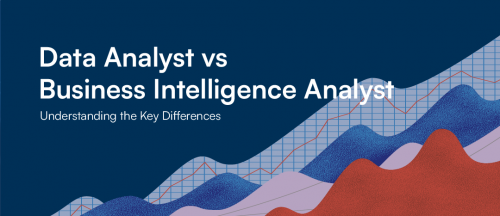

Exploring the key roles in Data visualization

Data Visualization is a powerful tool helping to transform complex data into understandable insights. This makes it an essential component in decision-making across various fields. Behind every successful data visualization project, there are individuals with distinct roles and responsibilities collaborating to turn data into visually stunning stories that anyone can understand. In this article, we will explore the different key roles.
What is the crucial role of data analysts in visualization?
Data collecting and cleaning
Data analysts are in charge of acquiring data from various sources such as databases, spreadsheets, or APIs and ensuring its quality. Moreover, their role consists of cleaning the data by standardizing formats, which is a crucial step to minimize potential inaccurate issues.
Data analysis and understanding
Before creating visualizations, data analysts conduct Exploratory Data Analysis (EDA) leading to a deep understanding of the dataset and a selection of relevant information. EDA is a critical process in data science using statistical tools or techniques such as Python to investigate and examine a dataset. It aims to understand the underlying structure, patterns, and potential issues within the data before performing advanced analysis or modeling.
Furthermore, data analysts are the first line of defense against data anomalies. They are in charge of quality assurance by implementing data quality controls throughout processes.

Data visualization: selection phase
One of the key contributions of data analysts in visualization projects is their expertise in selecting the most suitable visualization techniques from simple visualizations such as bar charts or scatter plots to more advanced visualizations such as network diagrams or dashboards.
Therefore, data analysts are the backbone of any data visualization project. They serve as the bridge between raw data and meaningful insights. Data analysts are responsible for collecting, cleaning, and organizing data to make it sustainable for visualization. This includes identifying data sources, importing data, and handling missing or inaccurate information.
How do data scientists contribute to data visualization?
Data scientists work closely with data analysts but bring an additional layer of expertise. They focus on applying advanced statistical methods and machine-learning algorithms to extract deeper insights from data. They ensure that the chosen visualization methods align with the project’s objectives and effectively communicate the insights derived from their analytical work.

The synergy between data scientists and data analysts is essential in data visualization. Data analysts provide the foundational data preparation and initial insights. On the other hand, data scientists leverage their analytical skills to conduct in-depth analysis. This ensures that data visualizations is not only look visually appealing but also convey accurate and valuable insights leading to robust and more impactful visualizations.
When are data engineers involved in the data visualization process?
While data visualization often takes center stage in the world of data-driven decision-making, it is essential to recognize one of the heroes behind the scenes: the data engineer. He plays a crucial role in ensuring that the data needed for visualization is accessible, reliable, and well-structured. Data engineers design and maintain data pipelines that integrate data from various sources into a unified format. They work with databases, APIs, and data warehouses to Extract, Transform, and Load (ETL) data. Data engineers are responsible for optimizing data storage, ensuring that data is accessible for analysis and visualization promptly.

They collaborate with data scientists and analysts to understand their data requirements. They work as a bridge between the technical and analytical aspects of data visualization projects. Without the dedicated work of data engineers, the world of data visualization would lack the robust data needed to make informed decisions and drive business success.
Who are the other experts?
- Graphic designers who are responsible for the aesthetics and visual appeal of data visualizations. They choose color schemes, typography, and layout to create easily digestible charts, graphs, and dashboards.
- Data visualization specialists, also known as data artists, bridge the gap between data analysis and design. They have a deep understanding of data and design principles, allowing them to create visualizations that are both informative and visually pleasing. These specialists work closely with analysts, scientists, and designers to transform raw data into insightful visuals.
- Front-end developers play a crucial role in bringing interactive data visualizations to life. They use programming languages like JavaScript, HTML, and CSS to build web-based dashboards and applications.
- Project managers oversee the entire data visualization project, from planning and scoping to execution and delivery. They coordinate efforts among team members, set project timelines, allocate resources. They also ensure that the project stays on track and within budget. Project managers also act as liaisons between the technical and non-technical stakeholders, ensuring that the visualization meets the project’s objectives.
Conclusion
Data visualization is a collaborative process that involves individuals with diverse skills and expertise. Even if the list of key roles in the article is not exhaustive, in general, each role in the data visualization ecosystem plays a critical part in transforming raw data into meaningful insights. Understanding the distinct responsibilities of these roles is essential for creating effective and impactful data visualizations that empower organizations to make data-driven decisions.






